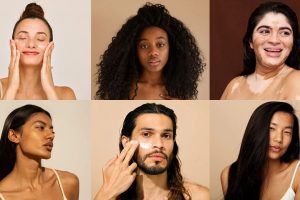
Introduction:
Beauty is a universal concept that transcends boundaries and cultures. However, cultural aesthetics play a significant role in shaping our perceptions of beauty. From facial features to skin tones, different cultures have their unique standards of what is considered beautiful. In this article, we will embark on a journey of exploration to understand the diverse cultural aesthetics that influence our notions of beauty. Through the lens of various cultures, we will celebrate the richness and diversity of beauty around the world.
1. The Power of Facial Features
Facial features play a crucial role in defining cultural aesthetics. Different cultures value specific facial characteristics that are deemed beautiful. Let’s explore a few examples:
a. East Asian Aesthetics: In East Asian cultures, features like a pale complexion, double eyelids, and a V-shaped jawline are often considered desirable. These aesthetics can be observed in popular Korean beauty standards, which emphasize porcelain-like skin and a defined facial structure.
b. African Aesthetics: African beauty traditions celebrate features such as full lips, broad noses, and high cheekbones. These characteristics are often associated with a strong sense of identity and cultural heritage. African beauty icons like Lupita Nyong’o and Naomi Campbell have defied traditional Western standards and embraced their unique African features.
2. The Tapestry of Skin Tones
Skin tones vary immensely across different cultures, each possessing its own beauty ideals. Let’s explore a few examples:
a. Fair Skin in South Asia: In South Asian cultures, fair skin has historically been considered a symbol of beauty and social status. This preference can be observed in the popularity of fairness creams and the portrayal of fair-skinned individuals in media and entertainment. However, there is now a growing movement in South Asia to challenge these beauty standards and celebrate diverse skin tones.
b. Melanin Richness in Africa: African cultures celebrate a wide range of skin tones, from deep ebony to rich caramel. Darker skin is often associated with strength, resilience, and beauty. The “Black is Beautiful” movement has played a crucial role in challenging colorism and embracing the diverse beauty of African skin tones.
3. The Art of Adornment
Adornments and embellishments further illustrate the cultural aesthetics of beauty. These can include traditional hairstyles, makeup, and body modifications. Let’s explore a few examples:
a. Geisha Makeup in Japan: The art of geisha makeup in Japan is a revered tradition. Geishas paint their faces white, apply vibrant red or pink lipstick, and draw delicate eyebrows to create an iconic look. This traditional aesthetic showcases the elegance and grace associated with Japanese beauty.
b. Henna in South Asia: Henna is an integral part of South Asian culture, particularly during weddings and celebrations. Intricate henna designs are applied to the hands and feet, symbolizing beauty, blessings, and auspiciousness. Henna serves as a form of artistic expression and cultural identity.
4. The Universal Essence of Beauty
While cultural aesthetics shape our perceptions of beauty, it is important to remember that beauty is not confined to one specific standard. As actress Lupita Nyong’o once stated, “Beauty is not something that is outside of us. Beauty is the light that shines out of us.” Beauty is diverse, multifaceted, and deeply personal.
As we explore cultural aesthetics, let us appreciate the richness and diversity they bring to the tapestry of beauty. By celebrating different standards and challenging beauty norms, we can foster inclusivity and empower individuals to embrace their unique features.
Conclusion:
Cultural aesthetics weave a captivating tale of beauty, reflecting the values, traditions, and aspirations of diverse cultures around the world. From facial features to skin tones and adornments, each culture offers its own unique perspective on what is considered beautiful. As we appreciate the beauty ideals of different cultures, let us also recognize the universal essence of beauty that resides within each individual.
As model and activist Adwoa Aboah once said, “Beauty lies in owning our individuality and celebrating our differences.” Let us celebrate the faces of beauty, embracing the rich tapestry of cultural aesthetics and recognizing that true beauty knows no boundaries.














